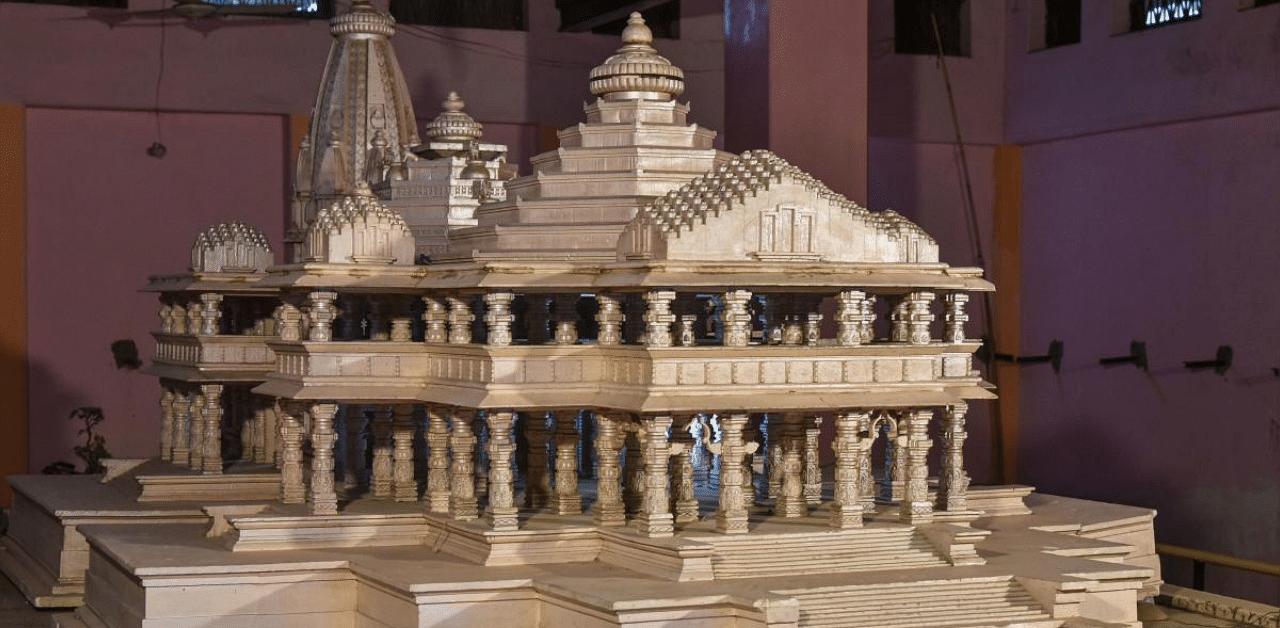
A nation's wait and a long saga of political and social turmoil will come to an end on Aug. 5, 2020, with the Ayodhya Ram Temple's 'bhoomi pujan'. A tale that began with the demolition of the Babri Masjid in 1992 will enter its final chapter as the ceremony marks the formal commencement of the much-promised mandir's construction. The design of the temple has been formulated by Chandrakant Sompura, who belongs to the Sompura clan.
Let's take a look at who the Sompuras are.
The Sompuras (or Sompura Salat) are a group of people who took up artistic and masonry works as an occupation and branched off from the Sompura Brahmin community. Kumar Suresh Singh, in the book India's Communities, wrote that "they are a section of Sompura Brahmin or Prabhas Patan which was once called Somapura because it was supposed to have been founded by Chandra (the Moon God)." However, Sompura Brahmins do not accept them as proper Brahmins. They maintain clan exogamy as a strict rule for marriage.
Get all the latest updates of Ayodhya Temple Bhoomi Pujan here
The Sompuras have constructed temples throughout history. Prabhashankar Oghadbhai, who was one of the leading designers of the Nagar style of temples, designed the modern Somnath Temple. According to the article 'A SHRINE turning into a work of ART' published in The Hindu, the Sompuras originally hailed from Patna, Gujarat, and were invited to settle in Chittorgarh. During the past five centuries, they have been involved in the construction and restoration of numerous Jain temples in Gujarat and southern Rajasthan, as well as temples built by Jains from regions in other parts of India.
Chandrakant Sompura, a grandson of Prabhashankar, has designed 131 temples, including the Swami Narayan Temple in Gandhinagar and Ambaji Temple in Palanpur. In 1889-90, he was asked by Ashok Singhal, former chief of the Vishwa Hindu Parishad, to design and build the Ram Janmabhoomi temple.
Chandrakant, who is 78 now, is spearheading the project and his two sons Ashish and Nikhil Sompura are assisting him. Though traditions in the family call for elders to pass the learnings of the Shilpa Shastras and the art of ancient temple architecture to the next generation, the modern age calls for certain upgrades to that technique. That is why both Ashish and Nikhil have acquired diplomas in civil engineering.
The original design for the Ram Temple was prepared in 1988 by the Sompura family of Ahmedabad. After the Supreme Court verdict in 2019, the Sompuras prepared a new design for the Ram Temple. The new design is grander than what was planned earlier. The temple will be 235 feet by 360 feet with a height of 161 feet and has been designed following the 'Nagara' style of architecture.
The first floor of the temple will have Ram Darbar housing idols of Lord Ram, Lakshman, Sita and Lord Hanuman. Around 30,000 tonnes of Bansi Pahadpur stone, also known as 'pink stone', will be used for the construction of the temple. There will be 360 pillars with 100 bows around the temple.
The temple complex will have a prayer hall, Ramkatha Kunj (lecture hall), Vaidik Pathshala (educational facility), Sant Niwas (saints residence), Yatri Niwas (hostel for visitors) and other facilities like a museum and a cafeteria. Once completed, the temple will be the world's third-largest Hindu shrine.